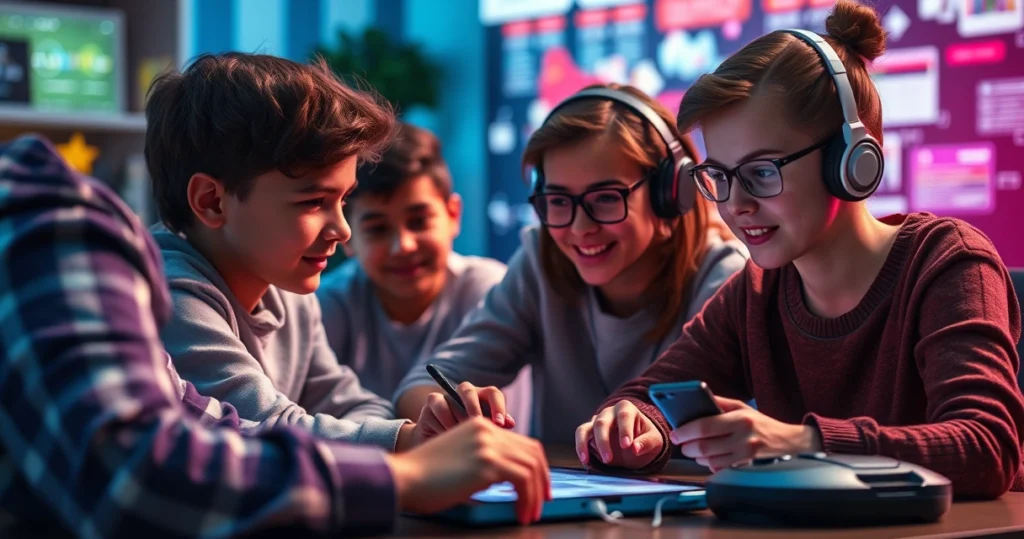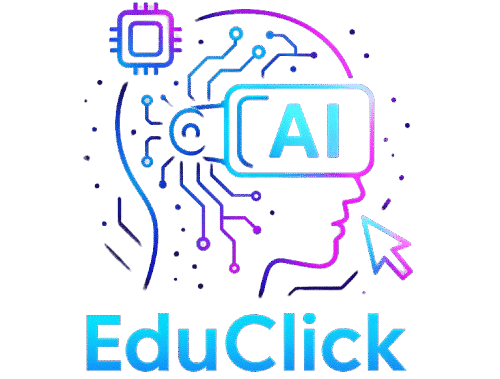Revolutionizing Education: How EdTech Tools Are Enhancing Student Engagement
Imagine a classroom where every student is not only attentive but also actively participating, even miles away in their own homes. As an educator or a parent, you’ve probably wondered how to capture and maintain the elusive focus of a child in the digital age. You are not alone. Reflecting on your own school days, the challenges were different, yet the question of engagement remains timeless. Today, technology offers solutions that were once the realm of fiction. It’s an exciting era where educational technology is not just supplementing traditional methods but redefining them. The feeling of witnessing a child light up with understanding, thanks to a well-timed piece of tech, is unparalleled. It’s an emotional journey that combines nostalgia with the thrill of new possibilities. Let’s dive into how EdTech tools are not only keeping students engaged but also transforming the educational landscape.

The Role of EdTech in Modern Classrooms
Understanding EdTech Tools
EdTech, short for educational technology, encompasses a wide array of digital tools designed to enhance learning experiences. Whether it’s through interactive software, virtual reality simulations, or educational apps, these tools aim to make learning more engaging and effective.
- Interactive software like Kahoot! allows for gamified learning.
- Virtual reality simulations provide immersive experiences.
- Apps like Duolingo make language learning accessible and fun.
Impact on Student Engagement
The introduction of EdTech tools has significantly influenced student engagement by providing diverse learning modalities that cater to different learning styles. Students who might struggle with traditional teaching methods often find themselves thriving in these tech-enhanced environments.
For example, visual learners benefit from video content, while kinesthetic learners engage more through interactive simulations. The personalization of learning paths is a key factor in maintaining interest and engagement.
Case Studies and Real-World Examples
Consider a case study from a New York City public school where the implementation of tablets increased student participation by 30%. In another instance, an Australian school using the Edmodo platform reported a significant improvement in student communication and collaboration.
- Increased participation due to interactive content.
- Improvement in communication through collaborative platforms.
- Enhanced accessibility for students with disabilities.
Remote Learning Strategies Enhanced by EdTech
Overcoming Remote Learning Challenges
Remote learning presents unique challenges, such as maintaining discipline and ensuring consistent engagement. EdTech tools provide viable solutions to these challenges by offering structured yet flexible learning environments.
Platforms like Google Classroom and Microsoft Teams offer streamlined communication and assignment tracking, thus reducing confusion and improving focus. These tools allow for real-time feedback, which is crucial for keeping students on track.
Creating Interactive Learning Environments
Interactive learning environments are vital for keeping students engaged during remote learning. Tools such as Nearpod and Pear Deck enable teachers to create interactive lessons that students can participate in from the comfort of their homes.
- Nearpod offers interactive slideshows that engage students.
- Pear Deck facilitates real-time student interaction during presentations.
- Breakout rooms in Zoom or Teams encourage group collaboration.
Practical Applications and Success Stories
In a California school district, the use of Flipgrid for virtual discussions saw student engagement rise by 40%. Another success story from India highlights how the Byju’s app has revolutionized mathematics learning for millions of students, improving scores significantly.
- Flipgrid nurtures discussion and peer interaction.
- Byju’s app supports individualized learning paths.
- Use of digital whiteboards for collaborative problem-solving.
🎥 Vídeo complementar sobre o tópico
Technological Innovations Fueling Student Engagement
Gamification in Education
Gamification involves applying game-design elements in non-game contexts, such as education, to boost engagement through motivation. By turning learning into a game, students are encouraged to participate actively.
Platforms like Classcraft and Socrative use points, badges, and leaderboards to transform traditional lessons into interactive experiences.
Personalized Learning Experiences
The use of AI in education has enabled the development of personalized learning experiences. Tools like DreamBox Learning adapt to the learner’s pace, offering challenges appropriate to their current level of understanding.
- AI-driven assessments provide personalized feedback.
- Adaptive learning paths cater to individual student’s needs.
- Real-time analytics help teachers adjust their teaching strategies accordingly.
Augmented and Virtual Reality
AR and VR technologies are breaking the barriers of traditional education by providing immersive learning experiences. VR can transport students to historical events or distant planets, fostering a deeper understanding of subjects.
- AR apps like Aurasma integrate real-world and digital content.
- VR headsets provide multisensory learning experiences.
- Simulated labs enhance practical understanding in subjects like chemistry and physics.
The Future of EdTech and Student Engagement
Emerging Trends in Educational Technology
As technology advances, new trends in educational technology continue to emerge, promising even more effective ways to engage students. Concepts like blockchain in education for secure credentialing and AI tutors are gaining traction.
Blockchain can ensure the authenticity of academic records, while AI tutors offer personalized assistance to students, answering queries and providing additional resources.
Integrating EdTech in Curriculum Design
Integrating EdTech tools into curriculum design is essential for maximizing their potential benefits. This involves careful planning and alignment with educational goals to ensure that technology enhances rather than disrupts learning.
- Curriculum planners should consider digital literacy as a core component.
- Teacher training is essential for effective technology integration.
- Feedback from both students and educators should guide iterative improvements.
The Role of Educators in the EdTech Era
While technology is a powerful tool, the role of educators remains crucial. Teachers act as facilitators, guiding students through technology-enhanced learning experiences and providing the human touch necessary for emotional and social development.
- Educators must remain adaptable to new technologies.
- They should foster a supportive environment that complements digital learning.
- Professional development opportunities should focus on EdTech proficiency.
Maximizing Student Engagement with EdTech
Strategies for Effective Implementation
Effective implementation of EdTech tools requires strategic planning and execution. Schools must assess their unique needs and resources to choose the right tools and methodologies for their students.
Incorporating student feedback and monitoring engagement metrics can help refine strategies for better outcomes.
Building a Collaborative Learning Environment
EdTech tools can facilitate collaborative learning, an approach that has been shown to enhance student engagement significantly. Platforms like Padlet and Trello encourage students to work together on projects and share ideas.
- Padlet allows for real-time collaboration on visual boards.
- Trello helps organize group tasks effectively.
- Collaborative documents in Google Workspace enhance real-time editing and feedback.
Addressing Equity and Accessibility
Ensuring equitable access to technology is critical for maximizing student engagement. Schools should strive to provide necessary devices and internet access to all students, regardless of socioeconomic status.
- Initiatives to distribute devices to underserved communities.
- Partnerships with internet service providers to offer affordable solutions.
- Development of offline resources for students with limited internet access.

Frequently Asked Questions
What are EdTech tools?
EdTech tools refer to digital resources and applications designed to facilitate teaching and learning. These include software programs, online platforms, and hardware devices that enhance the educational experience. Examples include learning management systems, educational apps, and communication platforms.
How do EdTech tools improve student engagement?
EdTech tools improve student engagement by offering interactive and personalized learning experiences. They cater to different learning styles, provide instant feedback, and make learning more relevant and entertaining through gamification and immersive technologies like AR and VR.
Can EdTech tools be used in remote learning?
Yes, EdTech tools are particularly effective in remote learning environments. They facilitate communication, collaboration, and resource sharing, making it easier to manage coursework and maintain student engagement outside the traditional classroom setting.
What are some challenges in using EdTech tools?
Challenges in using EdTech tools include ensuring equitable access to technology, training educators to effectively use these tools, and integrating them seamlessly into existing curricula. Additional concerns involve data privacy and the potential for screen fatigue among students.
How do you choose the right EdTech tools for your classroom?
Choosing the right EdTech tools involves assessing the specific needs of your students and educational goals. Consider the tool’s usability, cost, and alignment with learning objectives. Gathering feedback from students and educators can also guide the selection process.
What role do teachers play in the EdTech era?
Teachers play a crucial role in the EdTech era as facilitators who guide students through technology-enhanced learning experiences. They are responsible for integrating tools into the curriculum, providing support, and fostering an environment that encourages digital literacy.
Are EdTech tools suitable for all age groups?
EdTech tools can be adapted for different age groups, though considerations must be made regarding age-appropriate content and design. While younger students benefit from interactive, gamified learning, older students may require more advanced tools that support research and critical thinking.
How can EdTech tools support students with disabilities?
EdTech tools support students with disabilities by providing adaptive learning technologies, such as text-to-speech software, screen readers, and personalized learning paths. These tools help create an inclusive learning environment that caters to diverse needs and abilities.
What is the future of EdTech in education?
The future of EdTech in education is promising, with advancements in AI, AR, and personalized learning expected to further enhance student engagement. As technology continues to evolve, EdTech will play an increasingly pivotal role in shaping innovative and inclusive educational experiences.
Conclusion
In conclusion, EdTech tools are revolutionizing the way education is delivered, creating vibrant learning environments that cater to the needs of modern students. By leveraging technology, educators can address the diverse learning styles and preferences of their students, ensuring that each individual has the opportunity to succeed and thrive.
As you explore the potential of EdTech tools for enhancing student engagement, it’s crucial to remain adaptable and open to new possibilities. Embrace these technologies as instruments of transformation, capable of not only engaging students but also empowering them to take charge of their own learning journeys.
Your role, whether as an educator, parent, or student, is to navigate this landscape thoughtfully and creatively. By doing so, you contribute to a future where education is not just a requirement but a dynamic, engaging, and fulfilling experience for all.
Now is the time to take action. Explore, experiment, and implement the right EdTech tools in your educational setting. Witness firsthand the remarkable changes they bring, and be a part of the pioneering wave that redefines learning for generations to come.
Key Takeaways
- EdTech tools offer diverse strategies to enhance student engagement, particularly in remote learning environments.
- Personalized learning experiences made possible by AI and adaptive technologies cater to individual learning needs.
- Gamification and immersive technologies like AR and VR engage students in innovative ways by making learning interactive and fun.
- Effective integration of EdTech tools requires careful planning, educator training, and consideration of accessibility to ensure equitable access for all students.
- The future of EdTech holds exciting possibilities, with emerging trends promising to further revolutionize education.




